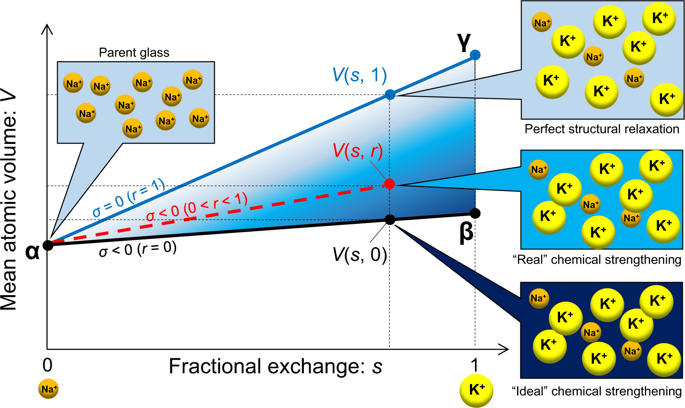Communications Physics ( IF 5.5 ) Pub Date : 2020-02-21 , DOI: 10.1038/s42005-020-0305-7 Nobuaki Terakado , Ryusei Sasaki , Yoshihiro Takahashi , Takumi Fujiwara , Shuji Orihara , Yoshio Orihara

|
Chemically strengthened glass is widely used for screen protection in mobile devices, and its strengthening processes and application fields have rapidly diversified. The origin of the strength is residual compressive stress induced by ion exchange, and the stress evaluation has been performed via the photoelastic effect. However, for a deep understanding of the nature of the strength and development of stronger glasses, we need a method directly connected to atomic-scale glass structures. Here, we propose a method based on the “stuffing” effect, where we can determine the residual stress non-contactively and non-destructively with a high spatial resolution using Boson, D1, D2, and A1 peaks in micro-Raman spectra. Finally, we show a plausible depth dependence of the residual stress.
中文翻译:

基于拉曼光谱的化学强化玻璃应力评估新方法
化学强化玻璃被广泛用于移动设备的屏幕保护,其强化过程和应用领域迅速多样化。强度的来源是由离子交换引起的残余压应力,并且已经通过光弹性效应进行了应力评估。然而,为了深入了解强度玻璃的强度和发展,我们需要一种直接连接到原子级玻璃结构的方法。在这里,我们提出了一种基于“填充”效应的方法,在该方法中,我们可以使用Boson,D 1,D 2和A 1来以高空间分辨率非接触和非破坏性地确定残余应力。拉曼光谱中的峰。最后,我们显示了残余应力的合理深度依赖性。



























 京公网安备 11010802027423号
京公网安备 11010802027423号